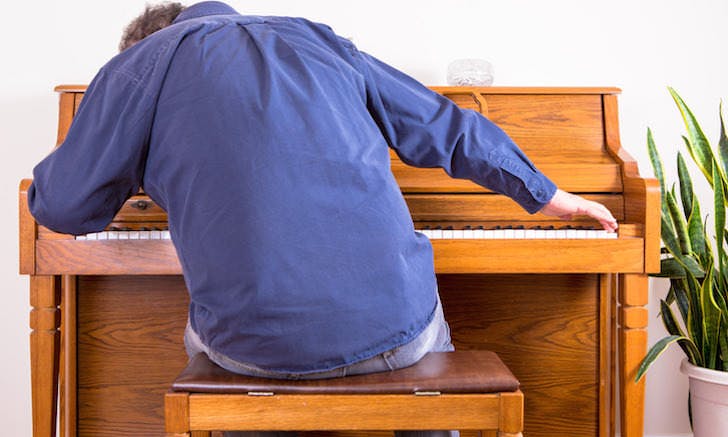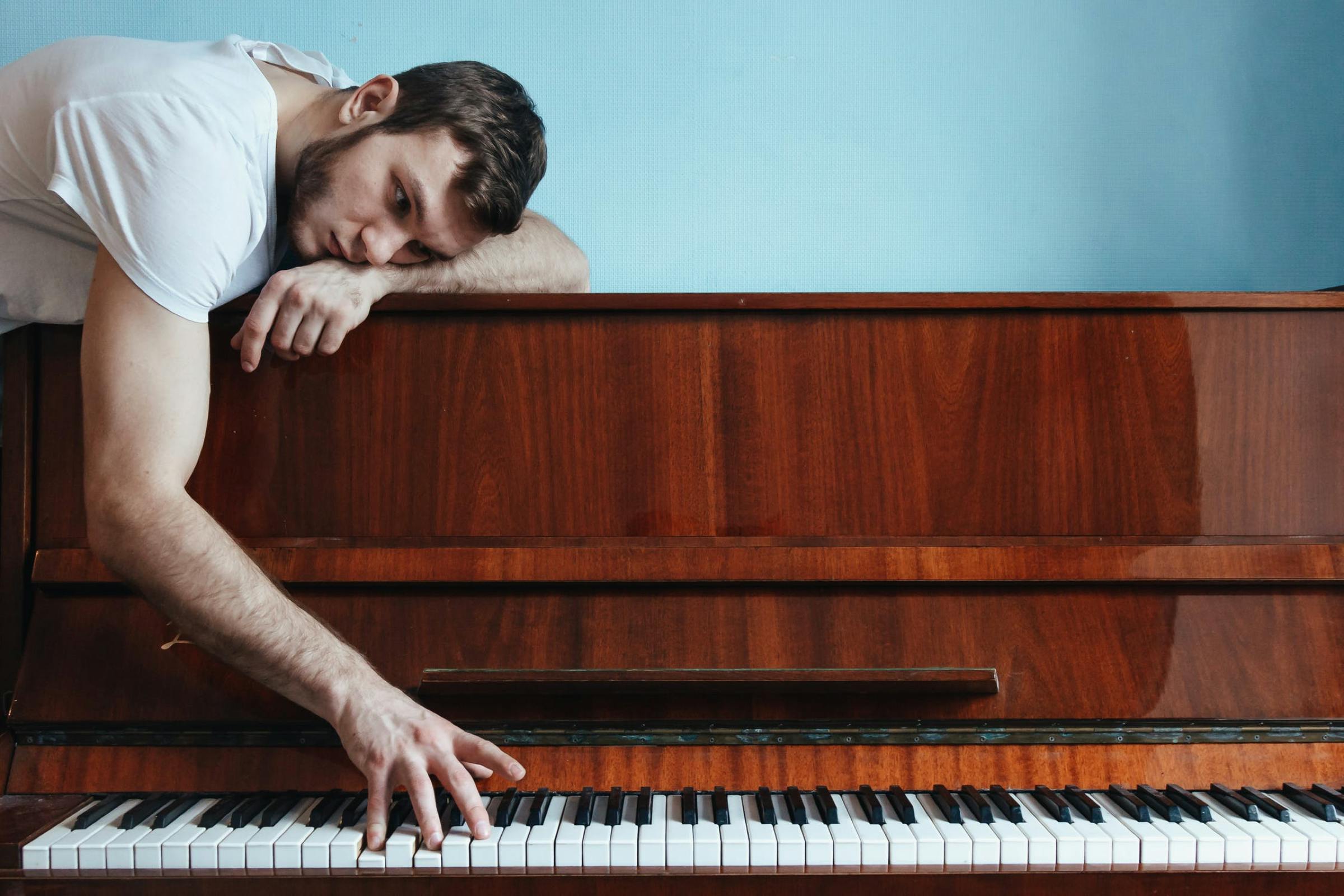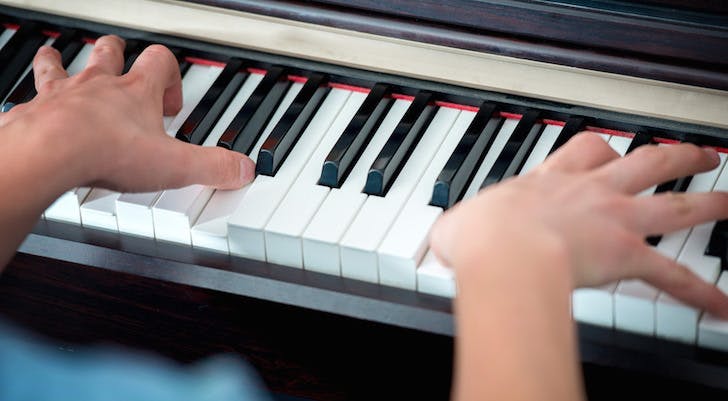How to Play a Easy Son on the Floot
One of the most frustrating things about learning to play piano is ironing out old mistakes. When I started, I wanted quick results, so I skipped all the things I thought were unnecessary. As a result, I picked up some bad habits that were a huge pain to break later.
But you don't have to fall into the same traps! Here's my personal list of the top five of things you'll hopefully do better than I did:
Mistake #1: Poor Posture

When I started, I didn't pay much attention to how I sat at the piano. I now know that posture at the piano is one of the most important basics! Sit too low or too high, too close or too far away and you'll end up with stiff shoulders and backaches.
It's easy to avoid all this if you take a moment to be mindful of how you're sitting at the piano. Start by keeping both feet planted on the ground parallel to each other. Sit in an upright and comfortable position. You can even imagine you're balancing a book on your head (or a crown -- whatever works for you).
Next, let your upper arms and elbows hang loose by your sides. Keep your forearms parallel to the floor. You should be able to reach the keys without leaning forward or raising your shoulders.
Now you're perfectly seated. Before you start to rock the keys, here's how you position your hands: have only your fingertips on the keys. Do this by arching your hands with your fingers curled slightly. It might help to imagine you're holding a small ball.
Mistake #2: Long sessions

When I started to learn a new song that I loved, I always started with a lot of enthusiasm. I tried to learn as much as I could in one session. Unfortunately, this usually ended with frustration and cramped fingers.
In the beginning, it is enough to practice about 10 minutes each day. Your muscles need to adapt to the new movements, which is hard work! Short bursts each day are much easier on your hands than marathon sessions once a week.
As you get better and better, you'll be able to practice for longer. But even professional musicians need breakds during their rehearsals. Most never practice longer than 40 minutes at once. For adults 30 minutes a day is a reasonable practice length. For younger students or kids 2-3 sessions of 10-15 minutes may be more efficient.
Mistake #3: Not establishing a routine
In a nutshell, you won't become a good piano player if you don't make it a habit to practice. We tend to start with high ambitions and a lot of practice time. After a few weeks, your practice sessions become less frequent. At some point, you realize that you haven't touched your piano for weeks.
To keep yourself on track, make practicing part of your daily routine (just like brushing your teeth). After a few weeks, you'll actually look forward to practice time. All that it takes is at least 10 minutes a day. That's two commercial breaks on TV! Why not spend them doing something more useful?
Mistake #4: Choosing the wrong fingering

Another thing I didn't pay much attention to when I started learning piano was fingering. Basically, I wanted to learn the keys as fast as I could, choosing the path of least resistance. So I played with the easiest, and in my opinion, most obvious fingering.
The problem here is that fingering that seems obvious, isn't always the most sensible. Often we don't realize until later that our fingering makes it difficult to play a song at its proper tempo. To make matters worse, changing fingering later is rather difficult. Why? Because our muscles have learnt to play the notes a specific way. The only way out is to start again from scratch with another fingering and do all the practice steps again. This can cost you weeks, and isn't worth the frustration.
So when you begin learning a new piece, take time to consider which finger plays which notes. When practicing with flowkey videos, pay attention to which fingers our pianists use. They're professionals, and have spent time working out the ideal fingering for each piece. If you're a more advanced player, you can also go through the piece and notate your own fingering.
Mistake #5: Putting the keyboard in a remote corner
You probably know the saying, "Out of sight, out of mind." It holds true for piano too. The less visible your keyboard is in your room, the harder it will be to sit down and get practicing. So try to keep your keyboard out of cramped corners or packed up inside wardrobes if you can.
Put it somewhere where you actually see it. If you like, you could even make your practice space the star of your room. It should tempt you to play your favorite songs every time you walk by! At the very least, keep your keyboard somewhere cheerful, bright and comfortable. No one likes to sit in a dark corner in the basement between old shelves and boxes.
I hope these tips help you get your piano-playing journey off to a great start. If you're keen for more tips and advice, check out our guide 4 Tips to Master Any Song or find out why it's never too late to start with our article Learning to Play the Piano as an adult.
Source: https://www.flowkey.com/en/mistakes-learning-play-piano
0 Response to "How to Play a Easy Son on the Floot"
Enregistrer un commentaire